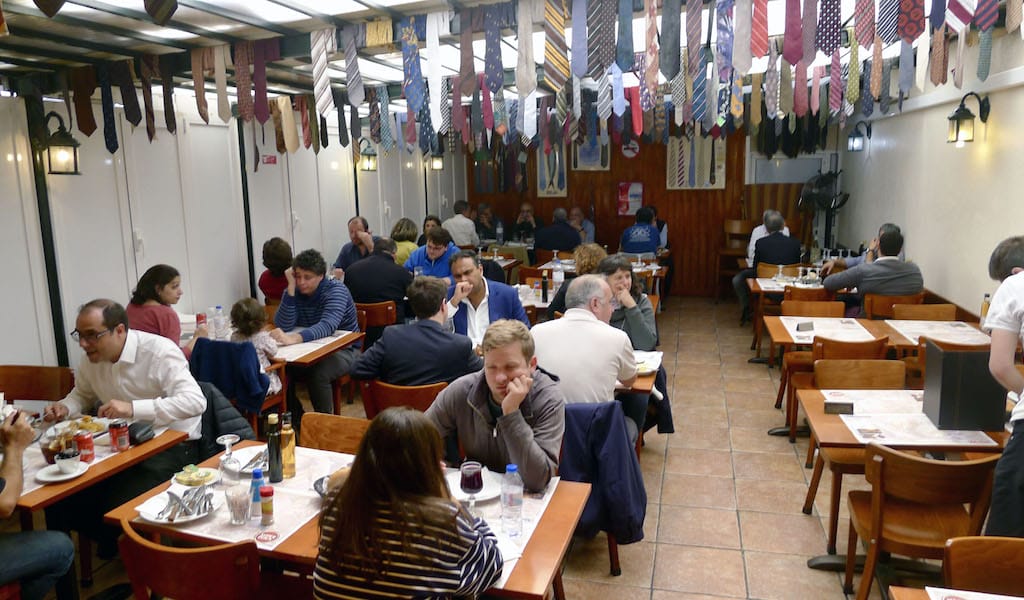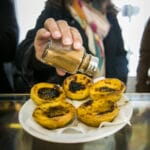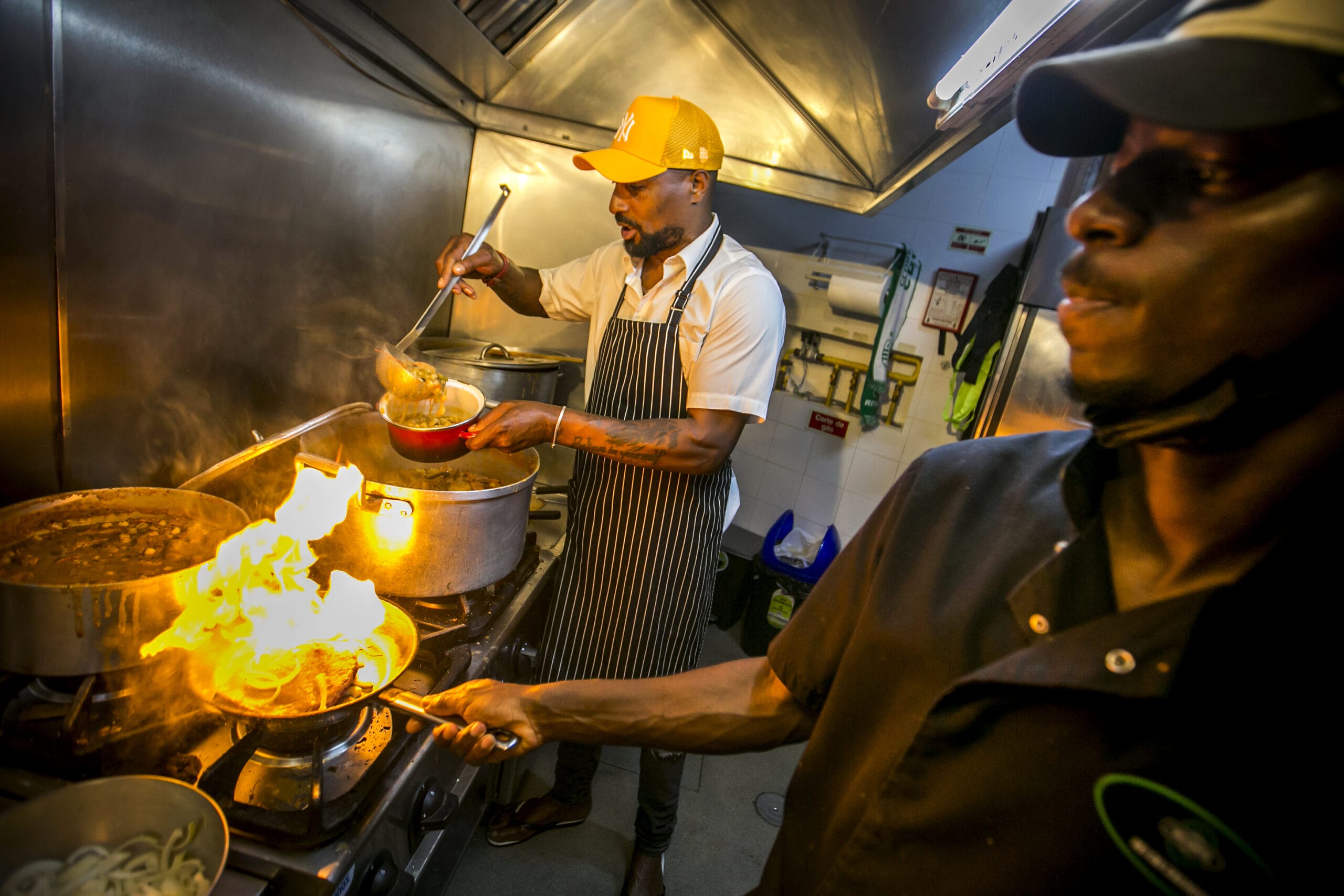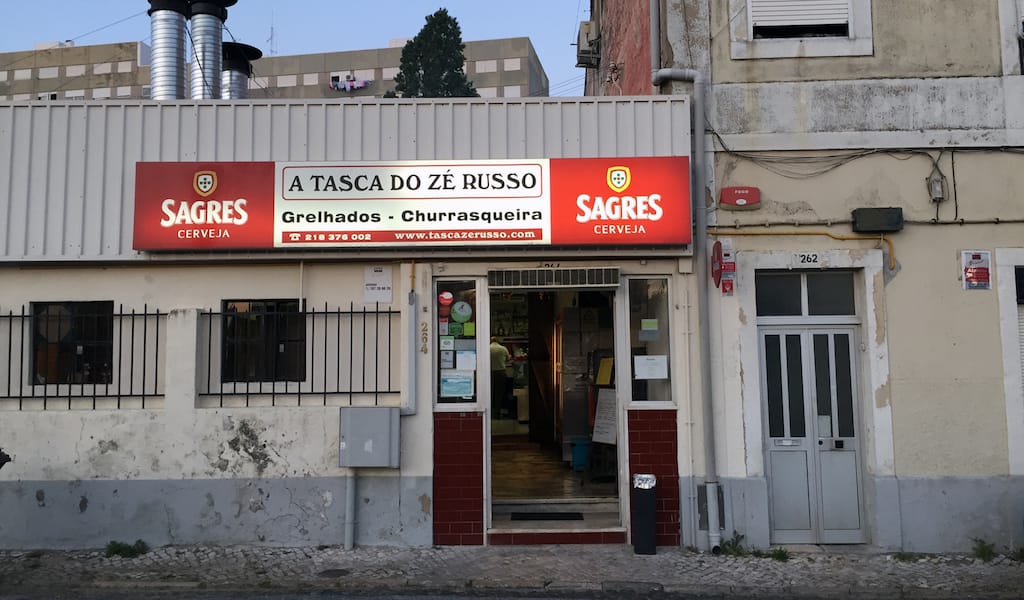Old Carnide feels like Lisbon’s land that time forgot. Just a 15-minute subway ride from the tourist bustle of downtown, tucked away behind a sprawling mega-mall and phalanxes of high-rise apartment blocks, it’s a neighborhood of cobbled lanes and pastel-painted 18th-century homes, where children play beside the cream-colored medieval church and graybeards argue soccer and politics under shady lime trees.
Come lunchtime, however, and the sleepy, village-like calm is shattered. Cars honk for parking spaces, and packs of besuited business types, chatty troops of workmates, extended family groups and multiple couples suddenly emerge onto Carnide’s narrow streets with one thought in mind: food.
“Last time I counted, there were 17 restaurants in the streets hereabouts, but there’s probably more now,” says Fernando Costa, 76, looking from the doorway of the tailor’s shop he took over from his father on Rua Neves Costa, the neighborhood’s main drag.
“Back in the old days, they were just taverns serving wine from the barrel with a plate of white cheese, sardines or grilled pork belly,” he recalls. “Over the years they’ve evolved into restaurants that bring in people from all over the city.”

Many of the area’s eateries make the trip out there worthwhile, serving classic Portuguese food with a focus on meat that’s grilled or cooked on a hot stone. Among the oldest and most sought-after is Adega das Gravatas, which throws open the doors of its low, whitewashed façade at just after midday and immediately fills with customers eager for the robust old-school fare.
Come on a Sunday and, long before opening, a line will be forming for the restaurant’s justly famed cozido – Portugal’s national dish which mixes a variety of meats and sausages, cabbage, potatoes, carrots, turnips and beans in a one-pot boiled dinner. The version at Adega das Gravatas is mountainous, made from quality fresh ingredients, and a bargain that comes in around €6.50 a head, even with a jug of the quaffable house red.
The story of the Adega (the word means wine cellar) starts in 1908 when Carnide was on the edge of the city, a jumble of convents and bucolic estates dating back to the Middle Ages alongside more recent ceramic factories and workers’ cottages.
Like many traditional restaurants in Carnide, and elsewhere around Lisbon, the Adega started out as a carvoaria – a store selling charcoal for cooking and heating. Often run by immigrants from Spain, such places started selling wine to customers waiting to load up with fuel, later adding snacks that could be grilled on the store’s charcoal.
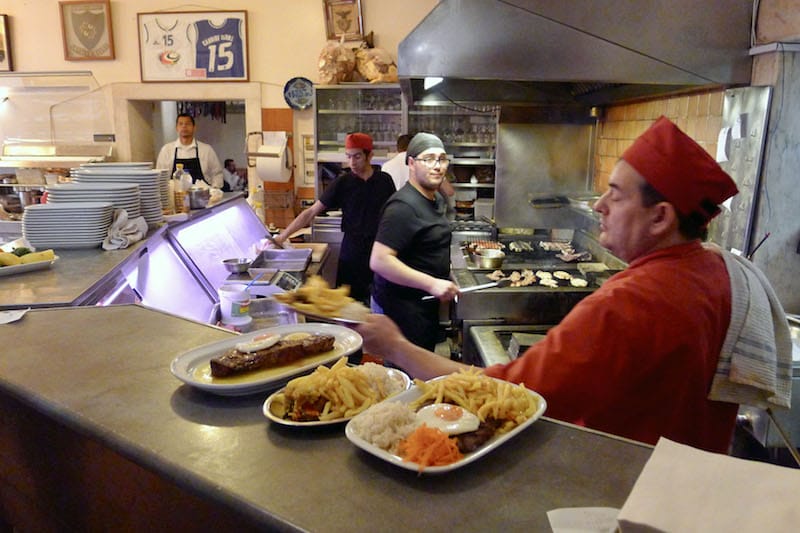
The Adega’s original bar is still there but the place has swelled to include two expansive dining rooms beyond an open grill zone and glass-fronted cases hung with gleaming sea bass, tangles of cephalopod tentacles, and hunks of red meat.
The barbecue is still the main attraction for many regulars. Menus change daily, but smoky plates of grilled octopus, butterflied fresh fish, ribs, steaks and alheira game sausages are fixtures.
Gravatas is Portuguese for neckties. Walk in and it’s clear how the joint got its name. Ties tumble from the rafters in multicolored cascades, they hang from the walls in anonymous bundles of stripes, spots and paisley patterns, or sit proudly in frames bearing the autographs of famed former wearers.
“On Fridays after work, they’d relax by taking off their ties, saying they’d pick them up on Monday morning.”
“When I took over in 1998, they had about 1,000 ties, now it’s almost 5,000,” explains owner Alfredo Almeida, lifting the lid on chests overflowing with neckwear yet to go on display.
“It started in the 1960s when regulars from a couple of nearby banks would meet up here. On Fridays after work, they’d relax by taking off their ties, saying they’d pick them up on Monday morning,” he recalls. “Sometimes, with the smoke and the food, the ties would get grimy, so they’d leave them here and the tradition began.”
Pride of place goes to ties that once adorned collars of soccer stars from the Benfica club. Its 65,000-seat stadium is a 20-minute walk away, which means the restaurant is even more crowded on match days.
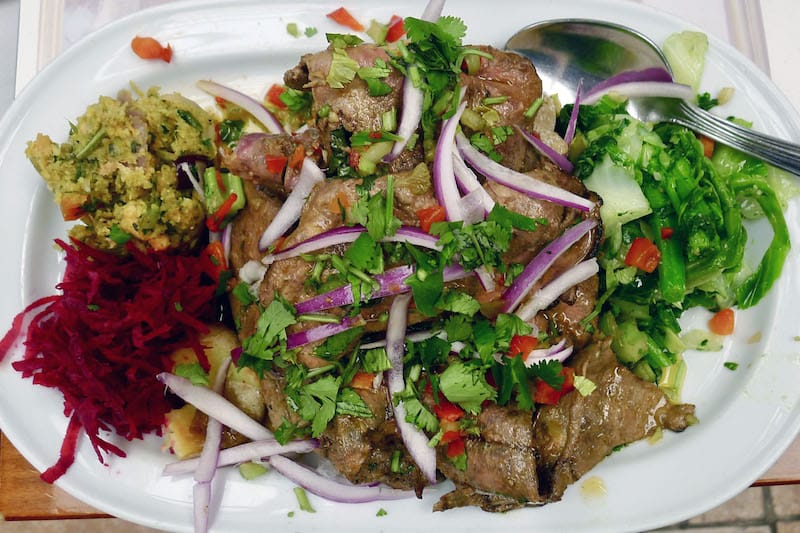
There were no games last time we popped in for a midweek lunch, but the polished wooden tables were soon jam-packed. The day’s specials included fritada de peixe com arroz de berbigão (fried fish with a creamy mix of rice and cockles); açorda de gambas (shrimp served in a garlicky bread-and-egg mash); iscas de coentrada (pan-fried liver with cilantro); and pernil assado no forno (oven-baked ham hock).
Portions are gargantuan – sharing a main is the norm, and they will provide a doggy bag if you go overboard. The hock was football-sized, delicate enough beneath the crispy skin to be carved with a spoon. Liver came sliced thin, melt-in-the-mouth tender and flavored with hints of garlic, red onion and vinegar. Accompanying both were piles of small potatoes baked in their skins, cabbage greens doused in olive oil and migas, a soft cornbread mash. Washed down with a half-liter of the house red and followed up with a dense wedge of carob-and-cocoa pie and a couple of espressos, the bill came to €30 for two. The shot of bagaço, a grappa-like firewater, was on the house.
Success means Adega das Gravatas has spawned a couple of offshoots in the neighboring Benfica district and the suburb of Amadora, but neither offers the chance for a post-meal stroll among the rustic charms of Carnide.
Paul AmesPaul Ames
Published on March 06, 2020
Related stories
April 4, 2024
LisbonQuick Bite: On this food tour in Lisbon, we’ll experience a cultural feast, tasting some of the most diverse bites of the city’s gastronomy and meeting the people behind them. The oldest city in Western Europe, once the hub of a trading empire that connected Macau in the east to Rio de Janeiro in the…
June 27, 2022
LisbonQuick Bite: On this full-day tour of central Lisbon, we’ll study the cuisines, history and diversity of Portugal’s former colonies. Get a taste of Cape Verdean cachupa, Brazilian pastries, Goan samosa, layered convent cake bedecked with spices and Angolan piripiri sauce and meet the people in the kitchen keeping the traditions of these communities alive.…
May 23, 2018
LisbonConsidering how much hype has been laden upon it since 2016, when a few galleries moved into some of its former warehouses, you’d think the light-industrial, heavily residential neighborhood of Marvila would already be out of fashion. Yet, step outside the cluster of streets hosting these art spaces, co-working hubs, brewer-bars and the famed cultural…







































